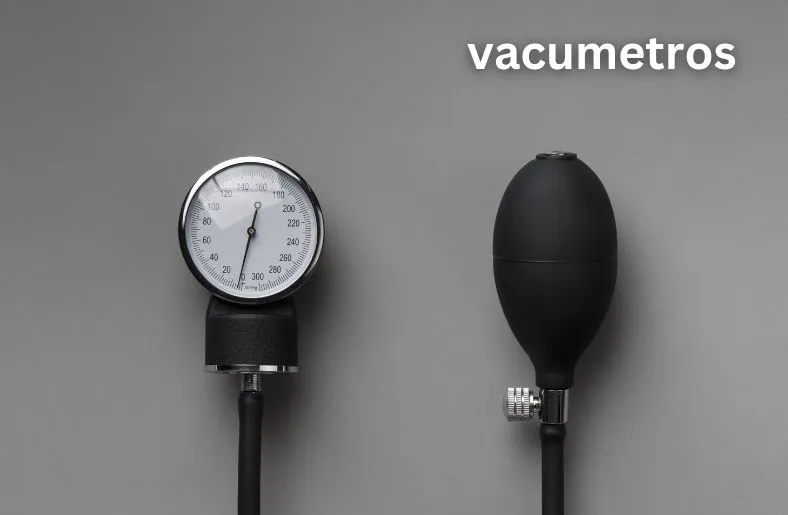Unlocking the Power of Vacumetros: Your Ultimate Guide to Vacuum Gauges

Introduction
In the intricate world of industrial processes, scientific experiments, and maintenance tasks, one crucial instrument emerges as a silent hero – the Vacumetros. Understanding the significance of these devices transcends mere recognition.
It delves into the core of operational efficiency, safety, and precision across various sectors. Let’s embark on a journey to uncover the essence of Vacumetros, exploring their definition, purpose, and profound importance in diverse industries.
Definition and Purpose of Vacumetros
At its essence, a Vacumetros serves as a pivotal gauge for measuring vacuum levels within a given system or environment. Functioning as a sensitive detector, it provides accurate readings crucial for maintaining optimal conditions in processes reliant on vacuum technology.
From industrial manufacturing plants to research laboratories and beyond, Vacumetros play a fundamental role in ensuring efficiency, quality control, and safety.
The purpose of Vacumetros extends beyond mere measurement; they serve as guardians of precision, enabling engineers, scientists, and technicians to monitor and adjust vacuum levels with meticulous accuracy.
By offering insights into pressure variations, these instruments empower professionals to make informed decisions, optimize performance, and mitigate potential risks associated with vacuum-related operations.
Importance in Various Industries
Industrial Manufacturing: In the realm of industrial manufacturing, Vacumetros reign supreme as indispensable tools for maintaining vacuum levels essential for processes such as vacuum forming, packaging, and semiconductor production.
By monitoring vacuum conditions, these devices ensure product quality, minimize defects, and enhance operational efficiency, thereby driving productivity and profitability.
Scientific Research and Experimentation
Within the realm of scientific research, Vacumetros serve as vital instruments for creating controlled environments essential for experiments in physics, chemistry, and materials science. From studying the behavior of gases to exploring the properties of matter under vacuum conditions, these devices enable researchers to unlock new frontiers of knowledge and innovation.
Healthcare and Medical Technology: In the field of healthcare, Vacumetros play a crucial role in medical devices such as vacuum-assisted wound closure systems, blood collection tubes, and dental suction units.
By maintaining precise vacuum levels, these devices ensure the effectiveness and safety of medical procedures, contributing to improved patient outcomes and healthcare delivery.
Aerospace and Aviation: In the aerospace and aviation industries, Vacumetros are instrumental in the design, testing, and maintenance of aircraft systems such as cabin pressure control, propulsion systems, and altitude simulation chambers.
By accurately measuring vacuum levels, these instruments uphold the integrity and safety of aerospace components, safeguarding both passengers and crew.
Environmental Monitoring and HVAC: In environmental monitoring and HVAC (Heating, Ventilation, and Air Conditioning) systems, Vacumetros play a vital role in maintaining optimal air quality, controlling humidity levels, and detecting leaks in refrigeration and air conditioning systems.
By ensuring efficient operation and energy conservation, these devices contribute to sustainability efforts and environmental stewardship.
The Basics of Vacumetros
Vacumetros, although seemingly simple devices, play a fundamental role in various industries, ensuring precise measurement and control of vacuum levels. Delving into their intricacies reveals a world of essential functions and mechanisms that underpin their operation.
What Are Vacumetros?
At its core, Vacumetros are instruments designed to measure and monitor vacuum levels within a given system or environment. Their primary function is to provide accurate readings of pressure conditions, enabling operators to maintain optimal vacuum levels essential for a wide range of industrial processes and scientific experiments.
Definition and Function
The term “Vacumetros” encompasses a diverse range of devices, each tailored to specific applications and measurement requirements.
These instruments typically consist of a pressure sensor, display unit, and associated electronics for data processing and output.
Their function revolves around the precise detection and quantification of vacuum, ensuring operational efficiency and safety.
How Do Vacumetros Work?
Principles of Operation
Vacumetros operate based on the principles of pressure measurement, utilizing various techniques to accurately gauge vacuum levels.
The most common method involves the use of a pressure sensor, such as a capacitance diaphragm gauge or ionization gauge, which detects changes in pressure and converts them into electrical signals.
Components and Mechanics
Key components of Vacumetros include the pressure sensor, which directly interacts with the vacuum environment, and the display unit, which presents the measured pressure readings to the operator.
Types of Vacumetros
Analog vs. Digital
Vacumetros come in two primary types: analog and digital. Analog Vacumetros utilize mechanical components and visual indicators, such as dial gauges or pressure meters, to display pressure readings in real-time.
On the other hand, digital Vacumetros employ electronic sensors and digital displays to provide precise numerical values of vacuum levels, along with additional features such as data storage and connectivity.
Different Measurement Techniques
In addition to analog and digital distinctions, Vacumetros employ various measurement techniques tailored to specific applications. Common techniques include:
- Direct measurement: Involves direct interaction between the pressure sensor and the vacuum environment, providing real-time readings of absolute or relative pressure.
- Indirect measurement: Utilizes secondary parameters, such as temperature or gas flow rate, to infer vacuum levels indirectly, offering insights into process conditions and system performance.
Applications of Vacumetros
In the realm of industrial processes, scientific exploration, and maintenance endeavors, Vacumetros emerge as indispensable tools, facilitating precision, efficiency, and safety across a myriad of applications. Let’s embark on a journey to uncover the vast array of uses for Vacumetros, spanning various industries and sectors.
Industrial Applications
Vacuum Systems in Manufacturing
In the bustling landscape of manufacturing, Vacumetros play a pivotal role in optimizing production processes and ensuring product quality. They are integral components of vacuum systems utilized in diverse manufacturing applications such as:
- Vacuum Forming: Facilitating the shaping of materials such as plastics and metals into desired forms through the application of vacuum pressure.
- Packaging: Enabling the removal of air from packaging materials to prolong shelf life, prevent spoilage, and enhance product freshness.
- Semiconductor Production: Supporting the fabrication of semiconductor devices by creating vacuum environments essential for deposition, etching, and other critical processes.
Automotive and Aerospace Industries
The automotive and aerospace sectors rely heavily on Vacumetros to uphold stringent quality standards, enhance performance, and ensure safety in various applications, including:
- Brake Systems: Monitoring vacuum levels in brake booster systems to ensure optimal braking performance and driver safety.
- Aircraft Systems: Maintaining precise vacuum conditions in cabin pressurization systems, altitude simulators, and propulsion systems to ensure passenger comfort and flight safety.
Scientific and Research Applications
Vacuum Chambers and Experiments
In the realm of scientific research and experimentation, Vacumetros are indispensable tools for creating controlled environments essential for a wide range of studies, including:
- Materials Science: Investigating the properties of materials under vacuum conditions to elucidate their behavior, structure, and performance.
- Physics Experiments: Conducting experiments in fields such as particle physics, plasma physics, and vacuum electronics, where precise vacuum levels are crucial for accurate measurements and observations.
Laboratory Equipment
Within laboratory settings, Vacumetros find application in a multitude of equipment and processes, including:
- Mass Spectrometers: Providing vacuum conditions necessary for ionization and analysis of molecular compounds in gas samples.
- Freeze Dryers: Facilitating the removal of moisture from biological samples and pharmaceuticals through sublimation under vacuum conditions.
Monitoring and Maintenance
In the domain of HVAC (Heating, Ventilation, and Air Conditioning) and refrigeration systems, Vacumetros play a critical role in:
- Leak Detection: Identifying leaks in refrigeration systems by measuring vacuum levels and detecting deviations from expected values.
- System Maintenance: Monitoring vacuum conditions during evacuation and charging processes to ensure system integrity and efficiency.
Factors to Consider
Accuracy and Precision
- Vacumetros serve the critical function of measuring vacuum levels accurately. When selecting one, prioritize models renowned for their precision.
High accuracy ensures reliable readings, essential for various applications like HVAC systems, pharmaceutical manufacturing, and semiconductor production. Look for vacumetros with calibration certificates and proven track records for precise measurements.
Range of Measurement
- Opt for vacumetros that offer a wide range of measurement capabilities to accommodate diverse needs. Consider the maximum and minimum vacuum levels your applications demand.
Some vacumetros specialize in low-pressure measurements, while others excel in high-pressure environments. Choose accordingly to ensure compatibility with your specific operational requirements.
Durability and Build Quality
- The durability of vacumetros is vital, especially in demanding environments where they may encounter harsh conditions. Invest in models constructed from high-quality materials like stainless steel or robust plastics, capable of withstanding temperature variations, pressure fluctuations, and chemical exposure.
Tips for Selection
Understanding Your Needs
- Before diving into the vast array of vacumetros available, thoroughly assess your requirements. Consider factors such as the intended application, frequency of use, environmental conditions, and budget constraints.
Understanding your needs will narrow down the options and guide you towards the most suitable vacumetros for your specific situation.
Evaluating Technical Specifications
- Pay close attention to the technical specifications of different vacumetros to make an informed decision. Look for details such as measurement range, accuracy, resolution, response time, and compatibility with existing systems. Compare these specifications against your requirements to identify the best match.
Common Issues with Vacumetros
Drift in Readings
- Drift in readings is a prevalent issue encountered with vacumetros, where the displayed vacuum levels fluctuate over time, deviating from the actual values.
This phenomenon can be attributed to factors such as temperature variations, sensor aging, or environmental changes. Drift can compromise the accuracy of measurements, leading to erroneous data and affecting process control.
Sensor Malfunction
- Sensor malfunction is another common issue that can plague vacumetros. Sensors are integral components responsible for detecting and measuring vacuum levels.
When sensors malfunction due to damage, contamination, or electronic issues, they may provide inaccurate readings or fail to function altogether. Sensor malfunctions can result from physical damage, exposure to harsh chemicals, or electrical failures.
Troubleshooting Techniques
Diagnosing Problems
- When faced with issues such as drift in readings or sensor malfunction, thorough diagnosis is essential to identify the root cause accurately.
Begin by checking for any visible damage to the vacumetros, including the sensor, display screen, and connecting cables. Next, examine environmental conditions, such as temperature and pressure fluctuations, which could influence the performance of the instrument.
Solutions and Fixes
- Once the problem has been diagnosed, implement appropriate solutions to address the issue effectively. For drift in readings caused by environmental factors, consider relocating the vacumetros to a more stable environment or implementing temperature compensation techniques.
In the case of sensor malfunction, consult the manufacturer’s guidelines for troubleshooting steps or consider recalibrating or replacing the sensor if necessary.
Conclusion
In conclusion, vacumetros serve as indispensable tools for measuring vacuum levels accurately in various industrial and scientific settings. By prioritizing factors such as accuracy, range, and durability when selecting vacumetros and implementing effective troubleshooting techniques to address common issues, users can maximize their utility and reliability.
This comprehensive guide aims to provide actionable insights and practical solutions to elevate your understanding of vacumetros and enhance their performance in your operations.



